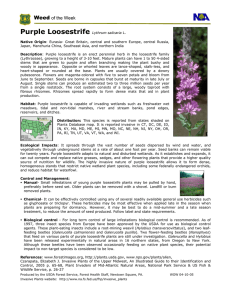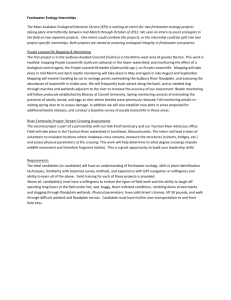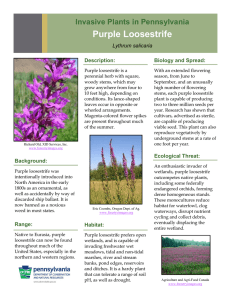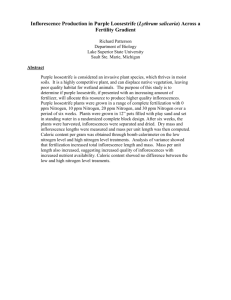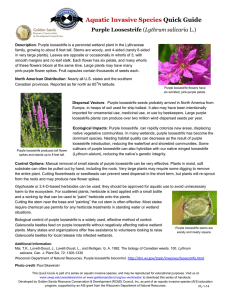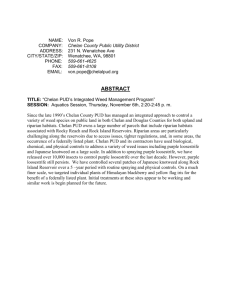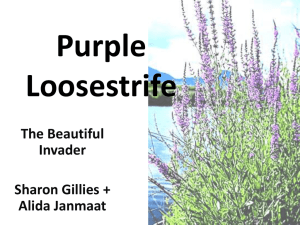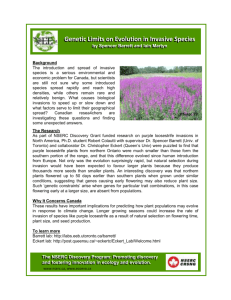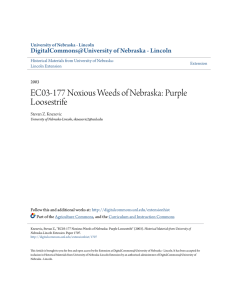Purple Loosestrife
advertisement
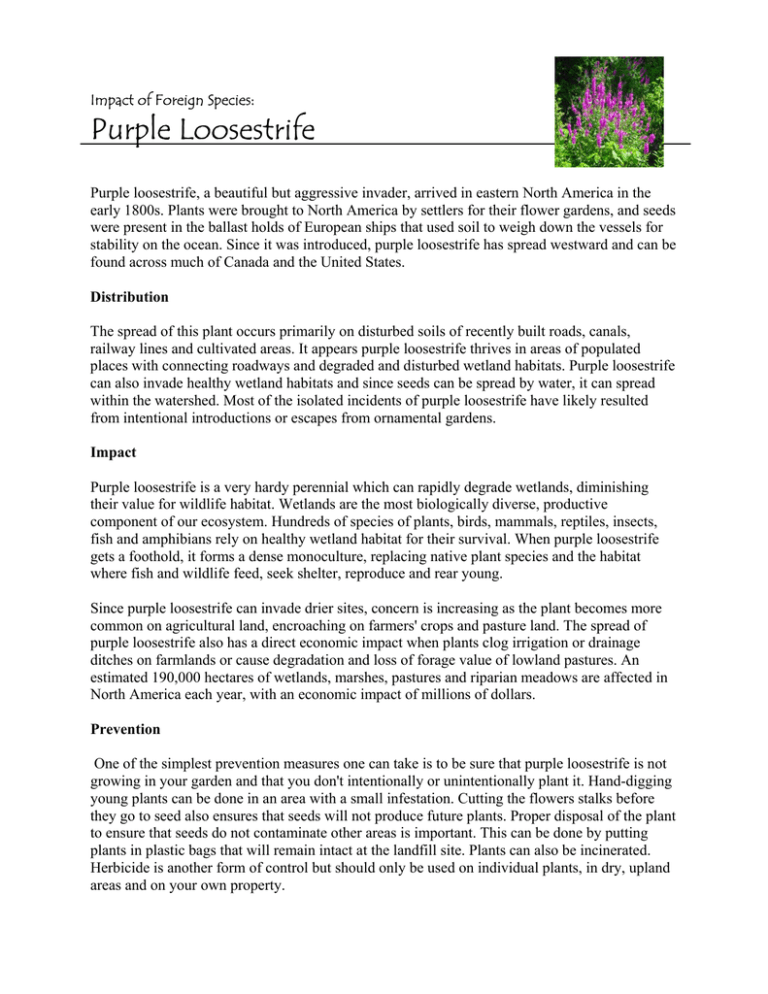
Impact of Foreign Species: Purple Loosestrife Purple loosestrife, a beautiful but aggressive invader, arrived in eastern North America in the early 1800s. Plants were brought to North America by settlers for their flower gardens, and seeds were present in the ballast holds of European ships that used soil to weigh down the vessels for stability on the ocean. Since it was introduced, purple loosestrife has spread westward and can be found across much of Canada and the United States. Distribution The spread of this plant occurs primarily on disturbed soils of recently built roads, canals, railway lines and cultivated areas. It appears purple loosestrife thrives in areas of populated places with connecting roadways and degraded and disturbed wetland habitats. Purple loosestrife can also invade healthy wetland habitats and since seeds can be spread by water, it can spread within the watershed. Most of the isolated incidents of purple loosestrife have likely resulted from intentional introductions or escapes from ornamental gardens. Impact Purple loosestrife is a very hardy perennial which can rapidly degrade wetlands, diminishing their value for wildlife habitat. Wetlands are the most biologically diverse, productive component of our ecosystem. Hundreds of species of plants, birds, mammals, reptiles, insects, fish and amphibians rely on healthy wetland habitat for their survival. When purple loosestrife gets a foothold, it forms a dense monoculture, replacing native plant species and the habitat where fish and wildlife feed, seek shelter, reproduce and rear young. Since purple loosestrife can invade drier sites, concern is increasing as the plant becomes more common on agricultural land, encroaching on farmers' crops and pasture land. The spread of purple loosestrife also has a direct economic impact when plants clog irrigation or drainage ditches on farmlands or cause degradation and loss of forage value of lowland pastures. An estimated 190,000 hectares of wetlands, marshes, pastures and riparian meadows are affected in North America each year, with an economic impact of millions of dollars. Prevention One of the simplest prevention measures one can take is to be sure that purple loosestrife is not growing in your garden and that you don't intentionally or unintentionally plant it. Hand-digging young plants can be done in an area with a small infestation. Cutting the flowers stalks before they go to seed also ensures that seeds will not produce future plants. Proper disposal of the plant to ensure that seeds do not contaminate other areas is important. This can be done by putting plants in plastic bags that will remain intact at the landfill site. Plants can also be incinerated. Herbicide is another form of control but should only be used on individual plants, in dry, upland areas and on your own property.
